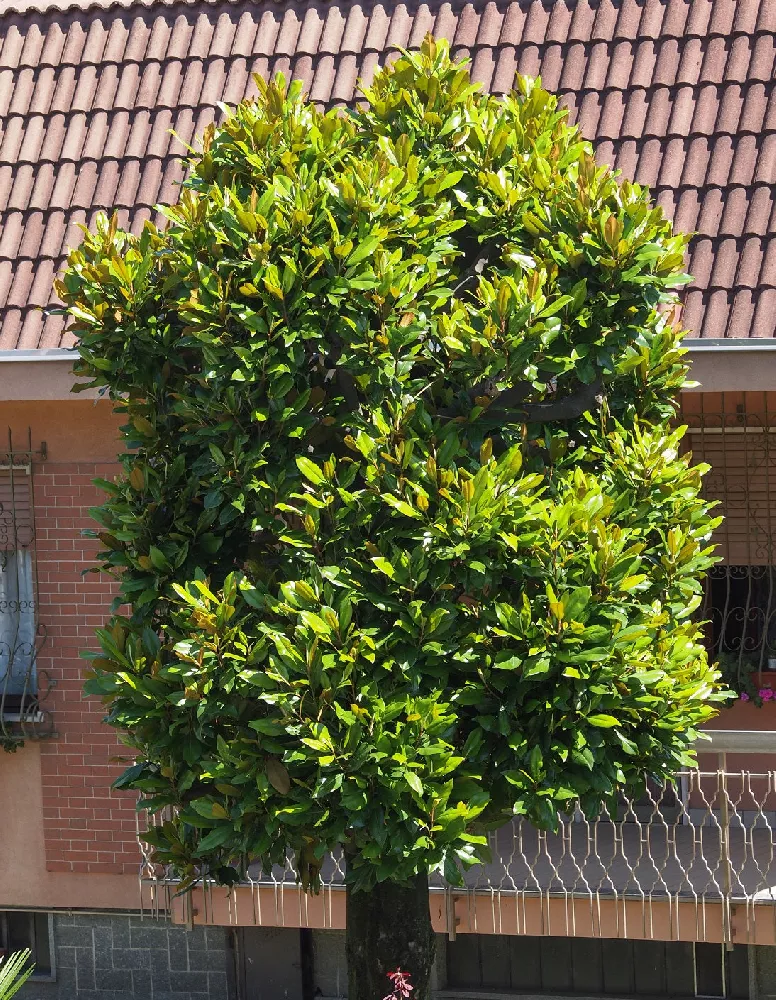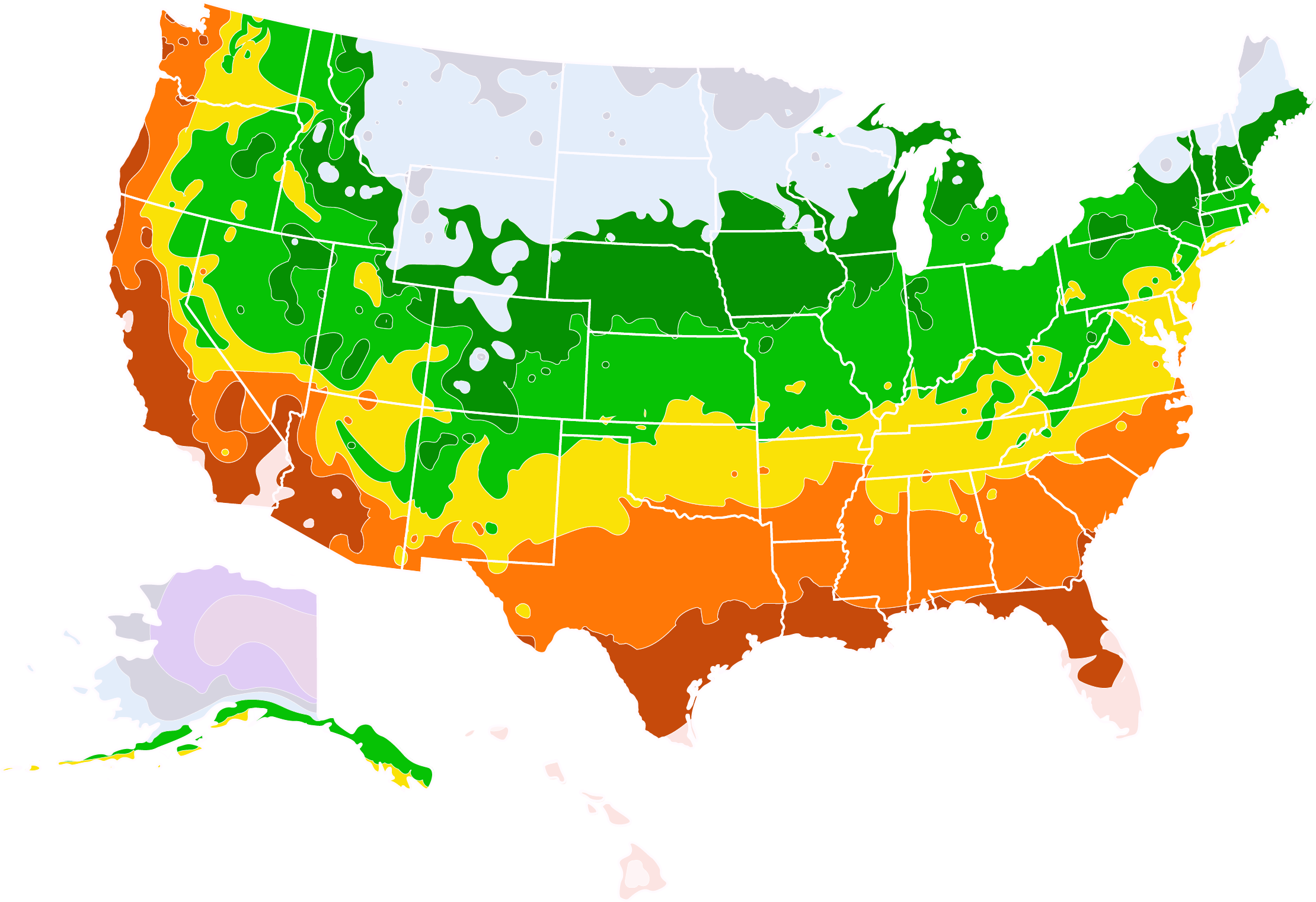Sweetbay Magnolia for Sale - Buying & Growing Guide
- Ships in 1-2 days
- 1-Year Warranty Eligible
- Pots or accessories are not included unless specified in the product options.
Shipping Details:
Once your order is shipped, you’ll receive an email with a tracking number and estimated delivery date. Most orders ship immediately, but some items are seasonal and may only ship in spring or fall. These products are noted on the website.
The sweetbay magnolia tree, Magnolia virginiana, is an attractive tree that grows easily wherever it’s planted throughout its range — which encompasses most of the continental U.S. It is tolerant of moist sites and can even handle standing water occasionally. It is also pest- and disease-resistant, making it an easy-care tree to add grace and form to your landscape. A small tree, it tops out at 20 feet or less, and it can be grown with a single trunk or as a large, multi-trunk shrub. It's an excellent choice to plant next to a patio or with a matched pair near your front door. Here are a few other reasons we love the sweetbay magnolia:
- Its attractive leaves are a dark, glossy green on top and silvery gray underneath.
- Creamy white, lemon-scented flowers in spring draw the eye and lead to red-seeded pods in fall.
- It can be container-grown to serve as a focal point on a patio.
Plant Care
Sunlight
The sweetbay magnolia grows well with four or more hours of direct sun a day; increased sun may lead to increased blooms.
Watering
Water frequently when young; after it is established, cut back on supplemental watering but keep soil moist.
Fertilizing
Fertilize in spring with a slow-release product designed for landscape trees and shrubs.
Planting and Care
Planting instructions
Site your sweetbay magnolia in a spot that gets at least four hours of direct sun a day, with moist soil that is slightly acidic. It is tolerant of clay soils but appreciates added fertility in the form of well-rotted compost or manure. Dig a hole for your sapling that is twice as wide as the root ball and just as deep. Unpot the tree and tease out any encircling roots, as these can girdle the tree and slowly kill it. Place it in the hole so that the top of the root ball is level with the ground. Fill in around the roots with soil that’s been mixed with compost or manure, tamping down as you go to eliminate air pockets. Water deeply when finished, and top off with a 2- to 3-inch layer of an organic mulch, such as bark chips, to help retain moisture.
Watering and nutrients
The sweetbay magnolia is a water-lover and can even handle standing in puddles, unlike most trees. Water it thoroughly so that the top layer of soil is evenly moist. Increase watering during dry or very warm weather, and when the plant is still young and not yet acclimated to its site. For the first few years of its life, feed your Magnolia with a balanced, slow-release fertilizer designed for landscape trees and shrubs. After three to five years, fertilizing is optional, based on whether new growth is robust or not.
Pollination
The sweetbay magnolia’s fragrant and eye-catching flowers are a magnet for insects such as beetles. The plants are monoecious, meaning that male and female elements are on the same plant. Pollinating results in small pods with very visible bright red seeds in the fall.
Pruning
You should prune your sweetbay magnolia after it finishes flowering, although you can remove dead or diseased branches whenever you see them. If you wish to grow your magnolia as a single-branched tree, trim out any secondary trunks that start to grow around the base of the plant. You may also prune it annually when young to an attractive shape.
Pests, diseases, and animals
Common pests of the sweetbay magnolia include scale insects and leaf miners. Usually, a healthy tree is able to fend off these pests, but if necessary, apply a horticultural oil or neem oil to mitigate any damage. These magnolias are not plagued by many diseases. At the most, you may find fungal leaf spot on your trees, which is generally not serious. Treat it with a copper-based fungicide. Few animal pests bother sweetbay magnolia trees, although birds and rodents may be attracted to the seed pods in fall.
Achieving maximum results
Considering how wide the sweetbay magnolia’s range is, it’s not surprising that you may find differences in the trees at the northern and southern ends of their range. In the north, for example, they are more likely to stay fairly short and may prefer to grow as a multi-stem shrub. Northern magnolias may also experience years of light flowering if there has been a late frost or cold spell. Trees at the southern end of the range grow taller and are more likely to bloom generously. Another reason you might have a light blooming year is too much nitrogen in the soil. If that’s the case, use a low-nitrogen fertilizer in spring.
FAQs
What's the best way to use the sweetbay magnolia in a landscape?
With its spectacular spring blooms, the sweetbay magnolia makes a great focal point in a garden. Surround it with shade-lovers like hosta and astilbe under the tree's canopy. The sweetbay magnolia is also an excellent choice if you have a problem spot where water drains. Few plants tolerate soil that is wet, but standing water does not bother the sweetbay magnolia. These trees can also be planted in large containers and used as part of a patio display. Just be aware that they may need additional watering, especially if they're in a very sunny spot.
How long does the sweetbay magnolia live?
When ripe, the fruit of the sea grape is quite sweet and is beloved of birds and small animals as well as people. In addition to eating them fresh off the bush, they are easily made into a tasty jam or jelly. They can also be used to make wine that is very palatable.
How fast growing are sea grapes?
A healthy tree that is well-cared-for and adequately watered can live up to 80 years. Container-grown examples will probably live a shorter life, due to the restrictions placed on them by being constrained within its pot.
Do sweetbay magnolias lose their leaves in the winter?
Generally, yes. In the southernmost areas of their range, they may keep their leaves in the winter, lose them for only a short time, or lose only some leaves. In the north, however, they are deciduous, and will drop their leaves when it gets cold out.
Is the sweetbay magnolia a messy tree?
It is far less messy than the southern magnolia, which has larger flowers and pods that drop in summer and fall. The sweetbay magnolia is a fairly small tree, and though it blooms generously, the flowers are only 2 to 3 inches and thus make less of a mess when they drop. If you are concerned about mess, consider planting your magnolia 6 to 8 feet away from sidewalks and driveways.
Compare Similar Products
You can't add more Product Name - Product size to the cart.
OK








